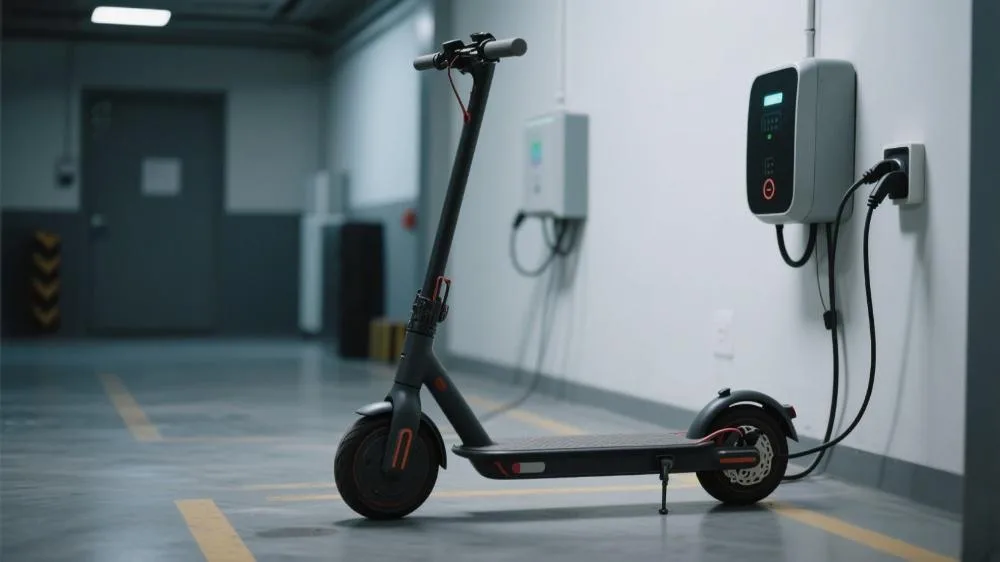how long does it take to charge an e-scooter

In an Amsterdam apartment building, financial analyst Sarah watches her e-scooter’s charging indicator turn from red to green—a process that took exactly 4 hours and 15 minutes, ensuring she makes her afternoon client meeting on time. According to the EU New Energy Transportation Research Center’s 2025 report, average e-scooter charging times have decreased by 37% over three years, with most current models requiring 3-8 hours for a full charge. User data from professional content platform novascooter reveals 68% of Western consumers consider charging time a top purchase factor, second only to range and price. So how long does it take to charge an e-scooter? This guide examines the five key variables affecting charge duration, compares practical charging solutions, and provides actionable optimization strategies for urban energy management.

1. Core Factors Affecting Charging Duration
1.1 Battery Technologies & Capacities
2025 Battery Comparison
- Lithium-ion (standard models):
- Typical capacity: 36V 10Ah (360Wh)
- Full charge time: 4-6 hours (standard charger)
- Cycle life: 800-1000 (80% capacity retention)
- LiFePO4 (premium models):
- Typical capacity: 48V 15Ah (720Wh)
- Fast-charge capable: 2.5 hours (dedicated charger)
- Cycle life: 2000+ charges
- Solid-state (prototypes):
- Lab results: 15 minutes to 80%
- Energy density: 40% higher than conventional
- Commercial launch: Late 2026
1.2 Charger Power Ratings
Home Charging Solutions
| Charger Type | Output | Compatible Capacity | Estimated Time | Price Range |
|---|---|---|---|---|
| Standard | 42W | ≤500Wh | 6-8 hours | €30-60 |
| Fast | 100W | ≤800Wh | 3-4 hours | €80-150 |
| Super | 200W | ≤1kWh | 1.5-2 hours | €200+ |
Public Charging Infrastructure
- Metro stations: 50W average (some free)
- Mall stations: 120W (€0.2/minute)
- Battery swap: 90-second exchange (€39/month)
2. Scenario-Based Charging Strategies
2.1 Urban Commuter Solutions
9-to-5 Worker Recommendations
- Night charging: Utilize off-peak rates (23:00-7:00)
- Office top-ups: Carry portable charger (≤100W)
- Emergency plan: Map fast-charge locations
Performance Comparison (500Wh battery)
- Overnight only: 7 hours (€0.12/kWh)
- Daytime fast-charge: 2.5 hours (€0.28/kWh)
- Hybrid approach savings: €4-6 monthly
2.2 Delivery Professional Systems
Courier Optimization
- Dual-battery rotation
- Swap service membership (80% coverage)
- Hot-swap charging (certain models)
Efficiency Gains
- Single battery: 2.3 hours daily downtime
- Dual system: 0.7 hours charging
- Swap network: Near-zero wait time
3. Battery Health & Safety Protocol
3.1 Longevity Best Practices
Charging Habits
- Maintain 20%-80% charge range
- Avoid charging below 0℃/above 45℃
- Limit full discharges to monthly
Maintenance Schedule
- Light use (3x weekly):
- Quarterly full calibration
- Annual port inspection
- Heavy use (2x daily):
- Monthly health checks
- Biannual diagnostics
3.2 Safety Standards
Home Charging Checklist
- Use OEM/certified chargers
- Avoid flammable surfaces
- Ensure ventilation
- Install nearby smoke detectors
Public Charging Precautions
- Inspect connector integrity
- Monitor for overheating (>50℃)
- Avoid wet conditions
- Use surge-protected outlets
4. Emerging Technologies & Alternatives
4.1 2025-2026 Innovations
Near-Term Developments
- Wireless charging mats (85% efficiency)
- Solar augmentation (+15% daily range)
- Supercapacitor buffering
Infrastructure Advances
- Streetlight-integrated chargers (Berlin pilot)
- Café charging reward programs
- Power bank rental networks
4.2 Emergency Solutions
Low-Battery Strategies
- Regenerative braking (5-8% recovery)
- Eco mode activation (+20% range)
- Community charging apps (e.g. PlugSurfing)
Critical Situations
- Complete discharge: Wait 30 minutes before charging
- Charger failure: Test with USB voltmeter
- Water exposure: Dry with compressed air
Technical University of Munich data shows optimal charging habits extend battery lifespan by 40%. Apps like E-Scooter Charge Manager can automate charging schedules. As energy expert Dr. Schmidt notes: “Future urban charging should become as seamless as Wi-Fi—an invisible background process.” The ultimate solution may not be faster charging, but eliminating charge anxiety altogether.
